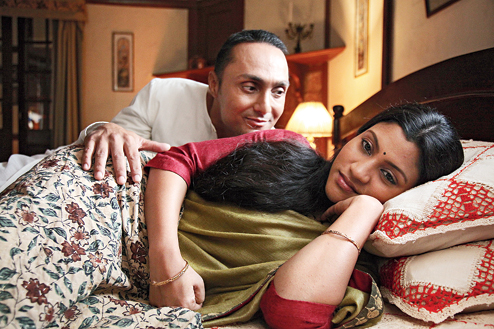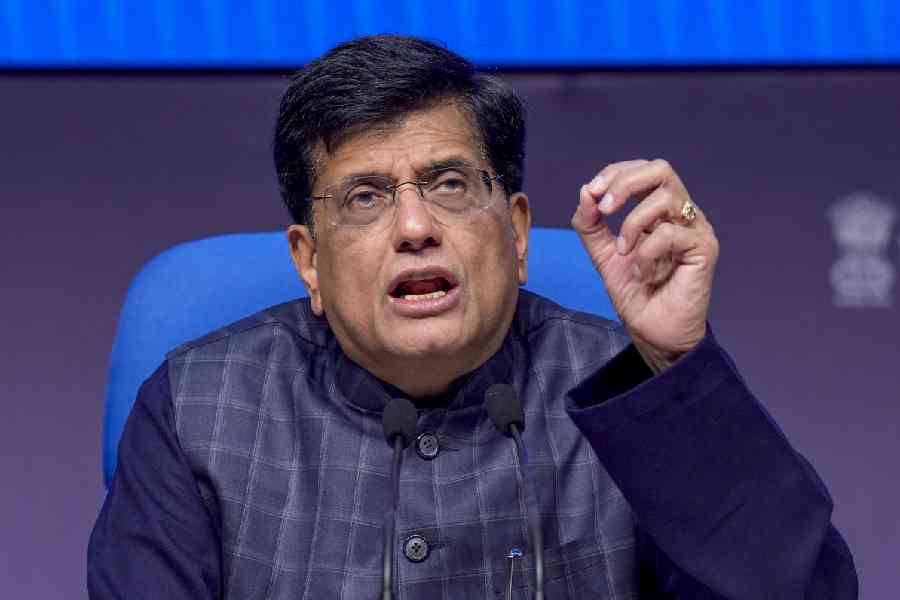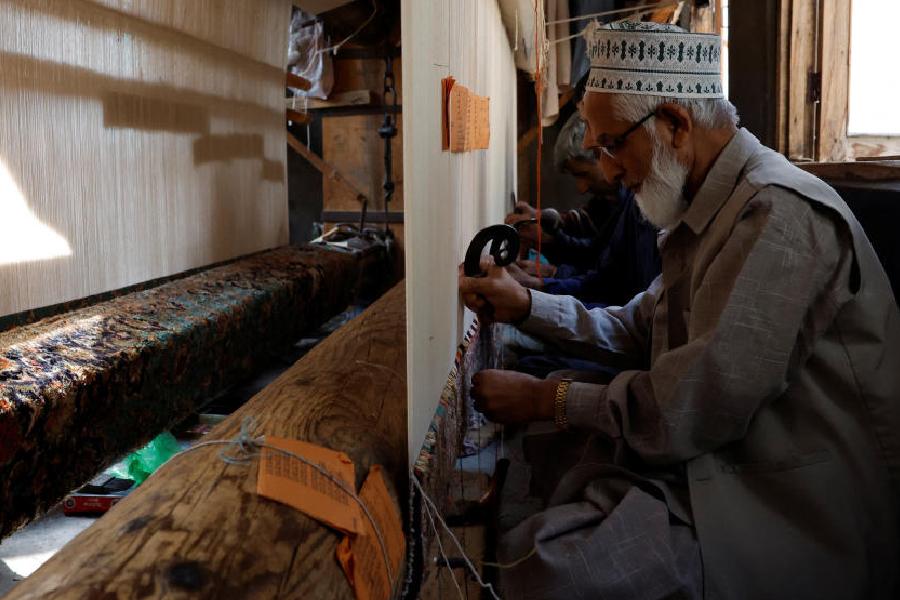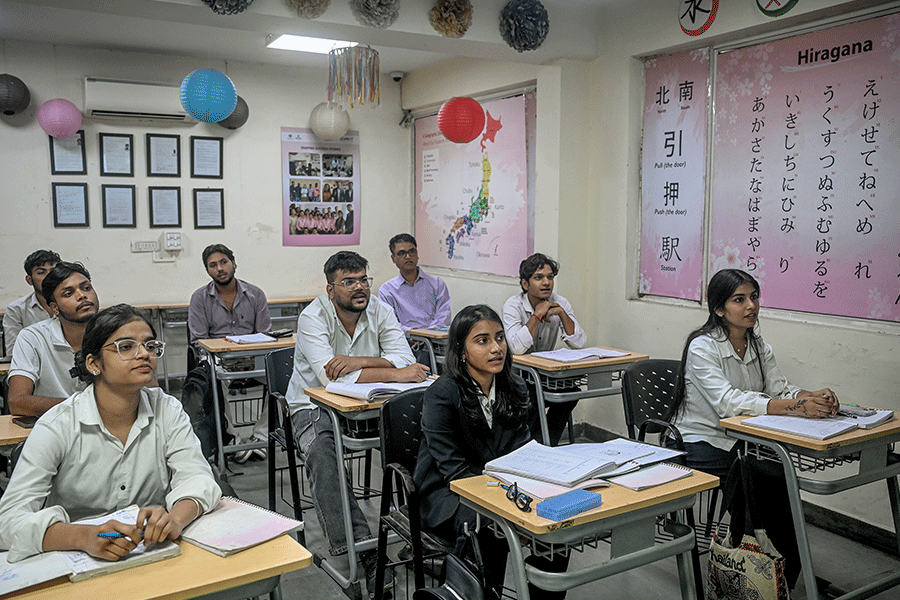
As a love story, Rabindranath’s Shesher Kobita has a cult following and many people have fixed ideas about how Amit and Labanya should look. So how are viewers responding to your film?
Well, I am loving the response the film has generated. Some people have a problem with the casting of Amit and Labanya, but I am loving the fact that people are talking about it. There’s a dialogue going on.
What works most for the film is the screenplay, which retains the novel’s lyrical quality without getting bogged down by the language. What was the main challenge in adapting the text?
I tried to figure out the essence of Shesher Kobita, which is about man-woman relationships and the institution of marriage. Here are these two people who love each other but marry other people.... Rabindranath kept it open-ended, and I thought of confining the characters within that dynamics. I wanted to bring out the various tensions in the characters through nature. The interplay of the fog or the use of the waterfall, which reflect the changing moods of the characters. For me the challenge was to integrate nature into the content.
The bigger challenge was the casting. Because people have very fixed ideas about Amit and Labanya, and also because of Soumitra Chatterjee and Lily Chakraborty, who had played Amit and Labanya in the audio drama on Shesher Kobita.
I had a clear idea of Labanya. See, Shesher Kobita the film was not initiated by me. A private producer had insisted that I give it a try and so I started struggling with the text, and slowly it became my film. But the film didn’t work out; that was in 2006. For Labanya, I had spoken to Konkona (Sensharma) then; in between I spoke to Rituparna (Sengupta) but I got back to Konkona later. I had also thought of Indraneil Sengupta as Amit. After watching the film, some people said they had a problem accepting Rahul (Bose) as Amit. I knew the audience would be divided over it and it was a risk, but I was ready to take that risk.
Yes, why cast Rahul as Amit Ray?
There’s a self-obsessed, arrogant aspect in Rahul’s look, which I wanted to use. I wanted to use his physicality, the defiance in his physicality. Rahul didn’t want to dub his lines initially. Mir dubbed for him and the film went to four festivals. The feedback I got from the probashi Bangalis was that Mir’s voice was pretty recognisable. I felt it would be a double risk — casting Rahul and then getting someone else’s voice — so before the film released, Rahul dubbed his lines and I think he did an extraordinary job.
Rahul’s dialogue delivery in the scene where he is addressing a literary meet does sound stilted...
Yes. But it was not possible for Rahul to say that whole speech at one go. He is smooth in the conversation scenes. That speech is very long, I shortened it.... But I needed that scene as an anchor, so that we can go back to the past, to Amit’s London days.

You have also made Katie and Sovanlal — the two characters sidelined in the novel — crucial to the plot line, specially making the villainish Katie more human...
I think making Katie human is my biggest contribution in this film. I feel Ketaki (Katie) is a vital player in the entire love story. If she becomes villainish, it’s difficult. People have liked Katie (Swastika Mukherjee), and as Sovanlal, Debdut (Ghosh) really got into the skin of the character.
Interestingly, Labanya and Sovanlal have more chemistry in your film than Labanya and Amit, the lead pair of the story...
Between Amit and Labanya it’s more of an intellectual exercise than love. Labanya is careful about Amit from the very beginning. She doesn’t fall headlong for him, like it usually happens when one falls in love. Labanya keeps her eyes open. She’s enjoying the intellectual exchange but doesn’t quite trust Amit. Actually, neither Amit nor Labanya could trust each other and that I think is the main failure in their relationship. Whereas Ketaki is completely in love with Amit, she still wears his ring. She could never imagine that Amit would meet someone else and fall in love.
Also, Amit is extremely self-obsessed. A big sign of romanticism is self-obsession, forgetting ‘the other’. Always. Amit’s sense of ‘I’ is so deep that love, marriage... all this is impossible for him. He never had that deep love for anyone. He flirts with women and when he meets Labanya he feels he has to win her over. That’s why I have kept only one scene where Amit and Labanya are holding each other, but holding very comfortably.
What Labanya feels for Amit is not the love of surrender, the kind she can have with Sovanlal. With Sovanlal, Labanya had a kind of professional animosity initially. She felt her father loved Sovanlal more and so he did better than her in the exams. But with Amit, it’s a more mature Labanya we get. The message I wanted to give out is
that Amit-Labanyar premta howari chhilo na.
Most of Shesher Kobita’s scenes and dialogues are kind of iconic. How did you go about chopping and choosing?
I had decided at the outset that I wouldn’t bore people with the language. I would only think about the content. My main focus was to make sure that the dialogues didn’t get in the way of the narrative flow.
Some people have asked me why I didn’t keep that tomar bari-amar bari scene with Amit and Labanya. It’s a fantastic visual exposition but I felt it wouldn’t have worked in cinema. There’s too much poetry in that scene. Also because Amit’s perception of love and marriage — which is in a dream space and has no connection with reality — has already been established and there was no need to enhance it with this scene. I had shot it too, but then decided to drop it.
Then, some others have asked if it was necessary to show Jogamaya’s backstory. It was necessary to show that Jogamaya was an educated woman who was married off into a very conservative family. Otherwise, the scene where she says the girls of the earlier generation were just khelar putul would not have had a base.
Women are the main focus in this film and I am telling the story more from Labanya’s point of view than Amit’s. The last poem, shesher kobita (Kaaler jatrar dhwani), is also written by Labanya. And Jogamaya is another side of womanhood. So is Ketaki, who gets back with Amit and lets herself be moulded the way he wants. Maybe it was a problem of the time... that the women could not negate the overpowering dominance of men.
Did you intend to make Shesher Kobita a period film? Because sometimes it feels like one is watching a contemporary film…
I wanted to keep the period feel, let’s say in the 1935-1940s. I didn’t want it to be contemporary but I also didn’t want to be finicky about period detailing. My brief was that the film had to have a period vibe but we should not feel as if we are looking at some characters from a distant past.... But if people are forgetting it’s a period film while watching, then I think it’s good.
A lady sitting next to me in the auditorium said, ‘Ema! Konkona-ke Byloomer sari poriyechhe.’
Oh! Does that mean the costumes did not blend into the film? Or that people are curious about costumes? People do keep a special watch when fashion designers do the costumes for a film. My brief for Dev and Nil was also to not get stuck up in being period-specific, but to bring a feel of the period.
The background score by Debojyoti Mishra has lifted the film and given it a modern feel…
Yes, as in the costumes and camera, my brief for the music was also to keep the essence of the past without being finicky. And Debu has brilliantly created the fusion. You might have noticed that the sarod is played during Sovanlal’s track, while for Labanya-Amit, the guitar is played like the sarod.
When adapting a popular literary work into a screenplay, are there any cardinal rules to follow?
The only cardinal rule is that one must forget the original author, whether it’s Tagore or Shakespeare. You have to treat it as your own text. You have to forget what people will say if you drop this or include that. It’s more difficult if it’s a popular work. People have set ideas about the characters of most Tagore novels, be it Nikhilesh or Sandip. If you feel inspired by a text, get out of its baggage. But you must make sure you are not disrespectful to the writer.
Making Shesher Kobita has been very satisfying for me. I got out of the urban landscape, which had happened to a certain extent with Chaturanga too, but with this film I got to discover myself. Like Labanya says, ‘Atodin jeno chhaya chhilum, akhon sotyi hoyechhi’, I feel the same.... I found a new me. That landscape, Cherrapunji... it’s a different methodology which I enjoyed.
Do you agree/disagree with Suman? Tell t2@abp.in











